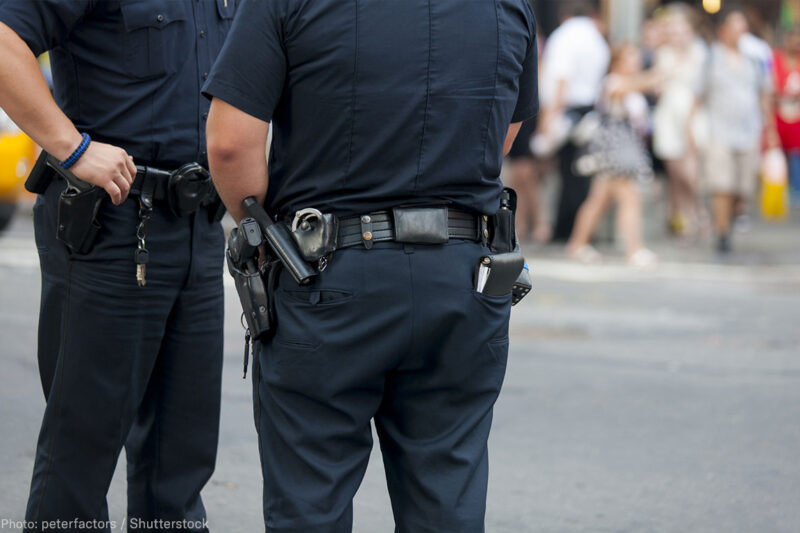
When two patrons at a Starbucks cafe in Philadelphia were arrested while waiting for a colleague earlier this year, people in Pennsylvania and around the country saw on video what Black people have known for a long time — the mere act of going about our daily lives can lead to harassment, arrest, or worse.
The stakes are ratcheted upward dramatically when we cross paths with law enforcement officers. Even when we comply with an officer’s every request, we can be at risk of violence.
That’s what happened to Sean Williams, a 27-year-old Black man in Lancaster, Pennsylvania, on June 28. While trying to comply with police officers’ conflicting commands, Williams was shot in the back with an electronic control device, popularly known as a Taser, after the brand that manufactures the weapon. A video recording of the incident has gone viral across the country.
Williams was a suspect in a dispute with three other people. While a statement from the Lancaster City Bureau of Police claims that the video does not show the full context of the incident and that Williams earlier failed to comply with their commands, the video clearly shows that the situation had deescalated to the point that Williams was seated and prepared to do what the police told him to do. Officer Philip Bernot stunned him with the Taser anyway, sending an electric shock through his body.
When Tasers first became available, they were marketed as an alternative to police using deadly force when they are or someone else is in danger of harm — even though a Reuters' investigation revealed over 1,000 people have died after being shot by Tasers. As this incident and many others have shown, police are not reserving the use of these stun guns only to end potentially harmful situations. Instead, they are using the weapon as a go-to device for control, even when no one is in any danger. Whatever brought Sean Williams to the attention of the Lancaster police, he was clearly not a risk to harm anyone when he was shot with the Taser.
In response to the incident, Lancaster Mayor Danene Sorace pledged a full investigation by the city police and the district attorney. She also said that the incident reinforces her determination to acquire body-worn cameras for the police bureau. While an investigation is warranted and body-worn cameras may sometimes provide valuable information when complemented with policies that demand transparency and accountability, the mayor’s response does not go nearly far enough.
The ACLU of Pennsylvania agrees with our allies at Lancaster Stands Up, a local grassroots community group, in its three demands that the officers involved are suspended immediately, the police and the city participate in a community meeting to address residents’ concerns about excessive force by city officers, and the city create a citizen-police review board. Anything short of this will send the exact wrong message. Police officers in Lancaster need to know that they will be held accountable when they brutalize the city’s residents.
This kind of treatment by law enforcement officers is nothing new for Black and brown people. Yet, people of privilege who are not subject to this kind of harassment and violence tend to believe us only when it’s captured on video. Until that changes, the best tool for police accountability is the smartphone in your pocket.

